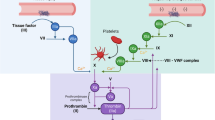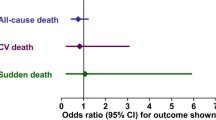Abstract
Current drugs used in the treatment of cardiovascular disease are effective but compliance is poor and they are short acting (hours or one day). Gene therapy offers a way to produce long-lasting effects (weeks, months or years). Antisense inhibition is being developed for the treatment of hypertension, myocardial ischaemia and improved allograft survival in human vascular bypass grafts. We are currently using 2 strategies: (i) antisense oligodeoxynucleotides (AS-ODNs) which are delivered nonvirally and (ii) antisense DNA delivered in viral vectors to inhibit genes associated with vasoconstrictive properties. It is not necessary to know all the genes involved in hypertension, since many years of experience with drugs show which genes need to be controlled. AS-ODN are short, single-stranded DNA that can be injected in naked form or in liposomes. AS-ODN targeted to angiotensin type 1 (AT1) receptors, angiotensinogen (ATG), angiotensin converting enzyme (ACE) and β1 adrenoceptors effectively reduce hypertension in rat models. A single dose is effective for up to one month when delivered with liposomes. No adverse or toxic effects have been detected, and repeated injections are effective. For viral delivery, adeno-associated virus (AAV) is used with a construct to include a cytomegalovirus or tissue-specific promoter, antisense NA to ATG, ACE or AT1 receptors and a reporter gene. Results in rats and transgenic mice show significant prolonged reduction of hypertension, with a single dose administration of AAV-AS. Left ventricular hypertrophy is also reduced by antisense treatment. AS-ODNs to AT1 receptors, ATG and β1 adrenoceptors provide cardioprotection from the effects of myocardial ischaemia. The AT1 receptor is more protective than losartan and does not increase plasma angiotensin as losartan does.
Similar content being viewed by others
References
Phillips MI. Is gene therapy for hypertension possible? Hypertension 1999; 33: 8–13
Yang BC, Phillips MI, Kimura B, et al. Critical role of AT1 receptor expression after ischemia-reperfusion in isolated rat hearts: beneficial effect of antisense oligodeoxynucleotides at AT1 receptor mRNA. Circ Res 1998; 83: 552–9
Suzuki J, Izawa A, Morishita R, et al. Prevention of cardiac allograft arteriopathy by antisense Cdc2 kinase oligonucleotide. Transplant Proc 1999; 31(1-2): 867–8
Mann MJ, Dzau VJ. Genetic manipulation of vein grafts. Curr Opin Cardiol 1997; 12(6): 522–7
The sixth report of the Joint National Committee on the prevention, detection, evaluation and treatment of high blood pressue [published erratum appears in Arch Intern Med 1998; 158 (6): 573]. Arch Intern Med 1997; 157 (21): 2413–46
Rutherford JD, Pfeffer MA, Moye LA, et al. Effects of captopril on ischemic events after myocardial infarction: results of the Survival and Ventricular Enlargement trial. SAVE investigators. Circulation 1994; 90(4): 1731–8
Isner JM, Asahara T. Angiogenesis and vasculogenesis as therapeutic strategies for postnatal neovascularization. J Clin Invest 1999; 103(9): 1231–6
Shyu KG, Manor O, Magner M, et al. Direct intramuscular injection of plasmid DNA encoding angniopoietin-1 but not angiopoietin-2 augments revascularization in the rabbit ischemic hindlimb. Circulation 1998; 98(19): 2081–7
Tan X, Mohuczy D, Zhang CY, et al. Systemic delivery of antisense against angiotensinogen mRNA by adeno-associated plasmid vector decreases hypertension. Am J Physiol. In press
Mohuczy D, Gelband CH, Phillips MI. Antisense inhibition of AT1 receptor in vascular smooth muscle cells using adeno-associated virus-based vectors. Hypertension 1999; 33: 354–9
Phillips MI. Antisense inhibition and adeno-associated viral vector delivery for reducing hypertension. Hypertension 1997; 29: 177–87
Phillips MI, Mohuczy-Dominiak D, Coffey M, et al. Prolonged reduction of high blood pressure with an in vivo, nonpathogenic adeno-associated viral vector delivery of AT1-R mRNA antisense. Hypertension 1997; 29(2): 374–80
Phillips MI, editor. Methods in enzymology: antisense technology. Vol. 313. New York (NY): Academic Press, 1999
Zamecnik PC, Stephenson ML. Inhibition of Rous sarcoma virus replication and cell transformation by a specific oligodeoxynucleotide. Proc Natl Acad Sci U S A 1978; 75: 280–4
Chiasson BJ, Hooper ML, Murphy PR, et al. Antisense oligonucleotide eliminates in vivo expression of c-fos in mammalian brain. Eur J Pharmacol 1992; 277: 451–3
Wahlestedt C, Pich EM, Koob GF, et al. Modulation of anxiety and neuropeptide Y-Y1 receptors by antisense oligodeoxynucleotides. Science 1993; 259(5094): 528–31
Gyurko R, Wielbo D, Phillips MI. Antisense inhibition of AT1 receptor mRNA and angiotensinogen mRNA in the brain of spontaneously hypertensive rats reduces hypertension of neurogenic origin. Regul Pept 1993; 49(2): 167–74
Morishita R, Gibbons GH, Ellison KE, et al. Single intraluminal delivery of antisense cdc2 kinase and proliferating-cell nuclear antigen oligonucleotides results in chronic inhibition of neointimal hyperplasia. Proc Natl Acad Sci U S A 1993; 90: 8474–8
Li B, Hughes JA, Phillips MI. Uptake and efflux of intact anti-sense phosphorothioate deoxyoligonucleotide directed against angiotensin receptors in bovine adrenal cells. Neurochem Int 1996; 31: 393–403
Zhang YC, Bui JD, Shen L, et al. Antisense inhibition of β1-adrenoceptor mRNA in a single dose produces a profound and prolonged reduction in high blood pressure in spontaneously hypertensive rats. Circulation 2000; 101(6): 682–8
Wielbo D, Simon A, Phillips MI, et al. Inhibition of hypertension by peripheral administration of antisense oligodeoxynucleotides. Hypertension 1996; 28: 147–51
Tomita N, Morishita R, Higaki J, et al. Transient decrease in high blood pressure by in vivo transfer of antisense oligodeoxynucleotides against rat angiotensinogen. Hypertension 1995; 26: 131–6
Gyurko R, Tran D, Phillips MI. Time course of inhibition of hypertension by antisense oligonucleotides targeted to AT1 angiotensin receptor mRNA in spontaneously hypertensive rats. Am J Hypertens 1997; 10: 56S–62S
Makino N, Sugano M, Ohtsuka S, et al. Intravenous injection with antisense oligodeoxynucleotides against angiotensinogen decreases blood pressure in spontaneously hypertensive rats. Hypertension 1998; 31: 1166–70
Peng J-F, Kimura B, Fregly M, et al. Reduction of cold-induced hypertension by antisense oligodeoxynucleotides to angiotensinogen mRNA and AT1 receptor mRNA in brain and blood. Hypertension 1998; 31: 1317–23
Yang BC, Phillips MI, Ambuehl PEJ, et al. Increase in angiotensin II type 1 receptor expression immediately following ischemia-reperfusion in isolated rat hearts. Circulation 1997; 96: 922–6
Simons M, Edelman ER, DeKeyser JL, et al. Antisense c-myb oligonucleotides inhibit intimai arterial smooth muscle cell accumulation in vivo. Nature 1992; 359: 67–70
Abe JI, Zhou W, Taguchi JI, et al. Suppression of neointimal smooth muscle cell accumulation in vivo by antisense cdc2 and cdk2 oligonucleotides in rat carotid artery. Biochem Biophys Res Comm 1994; 198(1): 16–24
Poston RS, Mann MJ, Hoyt EG, et al. Antisense oligodeoxynucleotides prevent acute cardiac allograft rejection via a novel, nontoxic, highly efficient transfection method. J Heart Lung Transplant 1998; 17: 349–55
Morishita R, Gibbons G, Ellison KE, et al. Intimai hyperplasia after vascular injury is inhibited by antisense cdk2 kinase oligonucleotides. J Clin Invest 1994; 93: 1458–64
Nabel EG, Yang Z, Liptay S, et al. Recombinant platelet-derived growth factor B gene expression in porcine arteries induces intimai hyperplasia in vivo. J Clin Invest 1993; 91(4): 1822–9
Mann MJ, Whittemore AD, Donaldson MC, et al. Ex-vivo gene therapy of human vascular bypass grafts with E2F decoy: the PREVENT single-centre, randomised, controlled trial. Lancet 1999; 354: 1493–8
Zhang C, Kimma, S, Shen L. New β-blocker prolonged reduction in high blood pressure with β1 antisense oligodeoxynucleotides. Hypertension 2000; 25(2): 219–24
Author information
Authors and Affiliations
Corresponding author
Rights and permissions
About this article
Cite this article
Phillips, M.I., Galli, S.M. & Mehta, J.L. The Potential Role of Antisense Oligodeoxynucleotide Therapy for Cardiovascular Disease. Drugs 60, 239–248 (2000). https://doi.org/10.2165/00003495-200060020-00001
Published:
Issue Date:
DOI: https://doi.org/10.2165/00003495-200060020-00001




